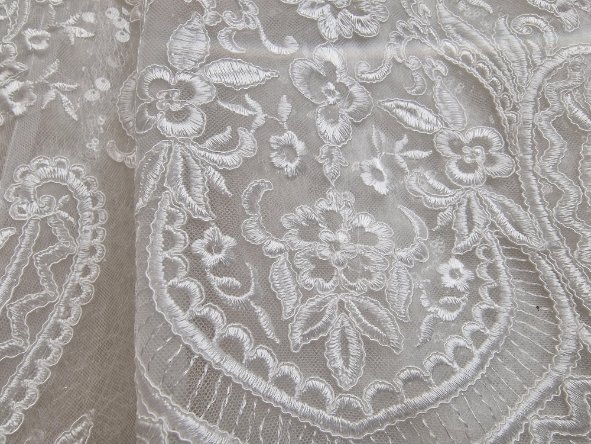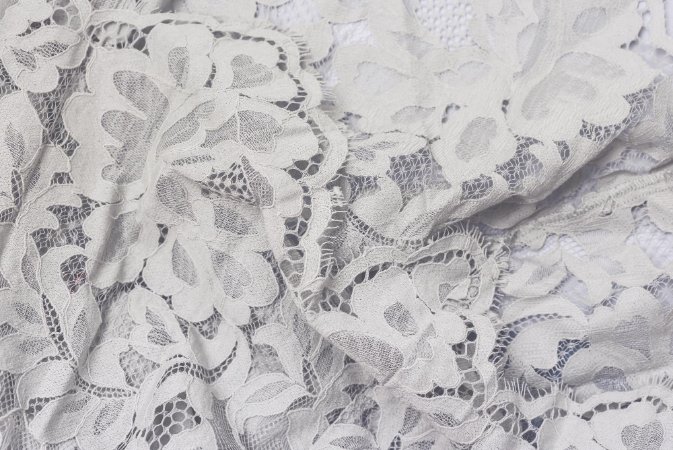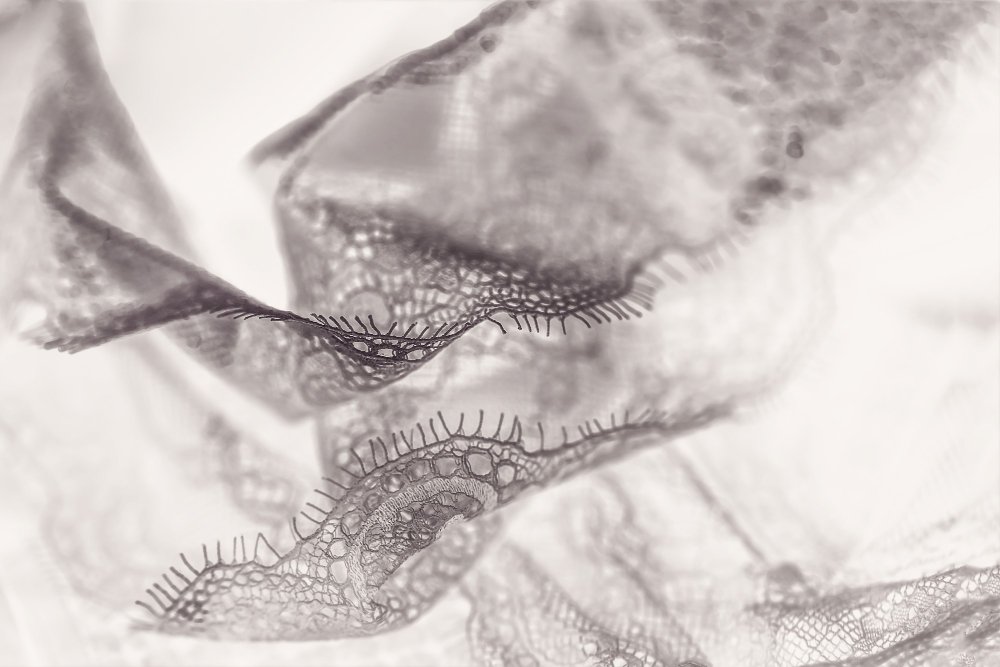Everything you need to know about choosing, using, and caring for tulle lace fabric in modern fashion and design
Key Takeaways
Quick Summary: Tulle lace fabric combines the delicate beauty of intricate patterns with lightweight mesh, making it perfect for wedding dresses, veils, and formal wear. This guide covers everything from sustainable options to troubleshooting common problems, helping you choose and care for this versatile material.
Table of Contents
- Introduction to Tulle Lace Fabric
- What Type of Fabric is Tulle?
- Unique Characteristics and Benefits
- Types and Material Composition
- Fashion Applications and Design Uses
- Sustainability and Eco-Friendly Options
- Care and Maintenance Guide
- Troubleshooting Common Problems
- Sourcing and Pricing Guide
- Frequently Asked Questions
- Conclusion
Introduction to Tulle Lace Fabric
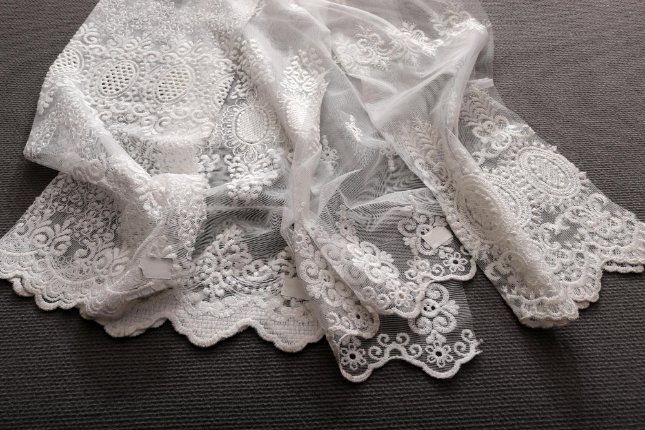
Imagine walking into a fabric store and being drawn to a material that feels like a whisper against your skin yet holds the strength to create stunning, voluminous designs. That’s tulle lace fabric for you. This remarkable textile has been enchanting fashion designers and home sewers for centuries, transforming ordinary garments into extraordinary pieces of wearable art.
The journey of tulle began in the small French town of Tulle during the 18th century, where skilled artisans perfected the technique of creating this delicate mesh fabric. Originally hand-crafted using intricate needlework, tulle quickly became a symbol of luxury among European nobility. Today, modern manufacturing techniques have made this once-exclusive material accessible to creators at every level, from haute couture designers to DIY enthusiasts.
What makes tulle lace fabric so special is its unique ability to balance delicacy with durability. The hexagonal mesh structure creates an airy, ethereal appearance while maintaining enough strength to support elaborate embellishments and hold dramatic shapes. This dual nature explains why lace fabrics like tulle continue to dominate both red carpets and wedding aisles.
What Type of Fabric is Tulle?
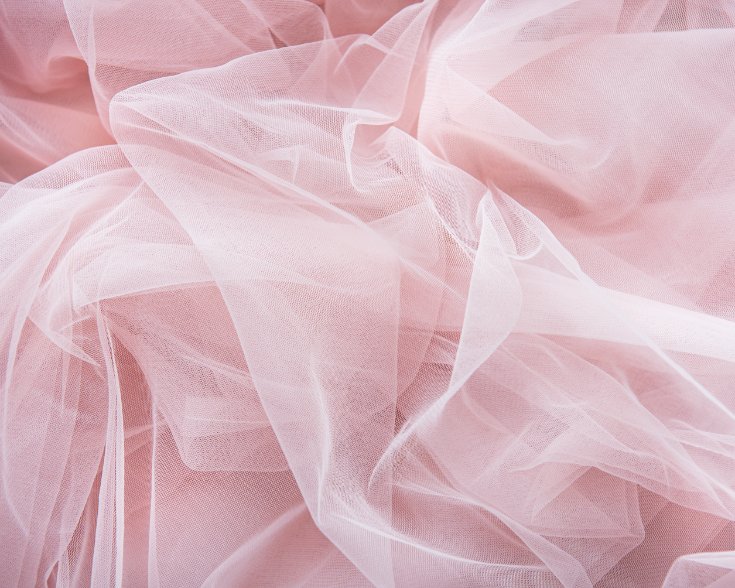
Tulle is a lightweight, fine netting fabric characterized by its distinctive hexagonal or diamond-shaped mesh structure. Unlike solid fabrics, tulle’s open weave creates a see-through effect that ranges from subtly sheer to completely transparent, depending on the thickness of the threads and the size of the mesh openings.
The fabric belongs to the broader family of net fabrics, but what sets tulle apart is its exceptional fineness and the way it’s constructed. While regular netting might use thicker threads for industrial or utility purposes, tulle uses extremely fine fibers that create a delicate, elegant appearance perfect for fashion applications.
Historical Development and Evolution
The evolution of tulle production tells a fascinating story of technological advancement. In the early 1800s, John Heathcoat revolutionized tulle manufacturing by creating the first machine capable of replicating the hand-made bobbin lace process. His bobbinet machine, developed in 1824, could produce simple plain tulle and remained largely unchanged for decades.
| Era | Production Method | Key Advantage | Accessibility |
|---|---|---|---|
| 1700s | Hand-stitched patterns | Unmatched detail | Exclusive to nobility |
| 1800s | Mechanical looms | Consistent quality | Limited commercial use |
| 1900s | Industrial machines | Mass production | Broader market availability |
| 2000s | Laser-cut designs | Precision detailing | Accessible to all markets |
Today’s manufacturing processes have retained the material’s signature lightness while expanding creative possibilities. Digital tools can now replicate intricate patterns that once took months to complete by hand, making luxurious styles accessible across various budgets. For those interested in learning more about traditional lace-making techniques, you might find our article on the art of tatting fabric particularly fascinating.
Unique Characteristics and Benefits
Softness and Lightweight Properties
The secret to tulle’s gentle touch lies in its delicate network of fibers woven into an open hexagonal pattern. This structure creates a barely-there sensation against the skin while maintaining remarkable durability. Unlike heavier alternatives, tulle layers effortlessly without the stiffness that can make garments uncomfortable to wear.
Fine tulle forms the foundation for countless designs, offering flexibility that moves naturally with your body. The mesh structure allows air to flow freely, preventing the overheating that can occur with dense fabrics. This makes tulle an excellent choice for summer weddings, dance performances, or any occasion where comfort and elegance must coexist.
Breathability and Comfort
What truly sets tulle apart from other formal fabrics is its exceptional breathability. The open mesh structure acts like natural air conditioning, allowing heat and moisture to escape while maintaining the fabric’s elegant drape. This property makes tulle particularly valuable for layered designs where multiple fabric layers might otherwise create an uncomfortably warm garment.
Despite its airy feel, quality tulle holds intricate beadwork and embroidery securely. The fabric’s ability to support decorative elements while remaining lightweight has made it indispensable in creating everything from delicate Chantilly lace overlays to elaborate ballgown skirts.
Shape Retention and Draping Qualities
Perhaps most importantly, tulle offers excellent shape retention. Drapes fall gracefully, and silhouettes stay defined without constant adjustments. From flowing veils to structured ballgowns, this textile delivers both elegance and ease of wear. The fabric’s memory allows it to return to its original shape after being compressed or folded, making it practical for both everyday wear and special occasions.
Types and Material Composition
Fiber Types and Blends
Modern tulle comes in several material compositions, each offering distinct characteristics that make them suitable for different applications. Understanding these differences helps you choose the right type for your specific project needs.
| Fiber Type | Key Properties | Best Uses | Price Range |
|---|---|---|---|
| Polyester | Wrinkle-resistant, easy care, durable | Daily wear, outdoor events, costumes | Budget-friendly |
| Silk | Temperature-regulating, luxurious finish, soft drape | Couture gowns, bridal veils, high-end fashion | Premium |
| Nylon | Strong, flexible, holds shape well | Structured designs, dance costumes, tutus | Moderate |
| Nylon-Poly Mix | Enhanced durability, shape retention, versatile | Bridal wear, formal gowns, structured designs | Moderate to high |
Polyester blends dominate mass-market production due to their practical advantages. They offer excellent stain resistance, easy care instructions, and budget-friendly pricing. For those seeking more sustainable options, manufacturers now offer natural and synthetic fabric blends that balance environmental consciousness with performance.
Silk tulle represents the luxury end of the spectrum, offering fluid drape and subtle sheen that synthetic alternatives struggle to replicate. Premium bridal collections often use silk-based textiles for veils that float like morning mist, creating an ethereal effect that’s become synonymous with high-end wedding fashion.
Tulle vs. Other Fabrics: Understanding the Differences
What is the Difference Between Lace and Tulle?
While both tulle and lace are often used together in formal wear, they serve very different purposes. Lace is a decorative fabric featuring intricate patterns created through various techniques like needle work, bobbin work, or machine embroidery. Tulle, on the other hand, is a foundation fabric with a simple mesh structure that provides volume and support.
Think of lace as the artwork and tulle as the canvas. Many stunning garments combine both elements, using tulle as the base layer to create volume and structure, while lace provides the decorative surface interest. For more details about different lace types, you can explore our comprehensive guide to French lace fabric.
What is the Difference Between Chiffon and Tulle Fabric?
The main distinction between chiffon and tulle lies in their construction and intended use. Chiffon is a woven fabric with a smooth, flowing texture that drapes beautifully and has a subtle sheen. It’s made using alternating S and Z-twist crepe yarns, which give it a characteristic slightly rough texture and excellent drape.
| Characteristic | Chiffon | Tulle |
|---|---|---|
| Structure | Woven fabric with smooth texture | Mesh/netting with hexagonal holes |
| Drape | Flows beautifully, very soft | Holds shape, stiffer than chiffon |
| Primary Use | Main fabric for flowing garments | Structural support, volume creation |
| Transparency | Semi-sheer to opaque | Very sheer, see-through |
| Durability | Delicate, prone to snags | More durable structure |
Chiffon excels in creating flowing, romantic silhouettes and is often chosen for the main body of garments. Tulle, with its mesh structure, is better suited for creating volume, supporting other fabrics, and adding structural elements to designs. Many wedding dresses successfully combine both fabrics, using chiffon for the main bodice and skirt, while incorporating tulle layers for volume and texture.
Fashion Applications and Design Uses
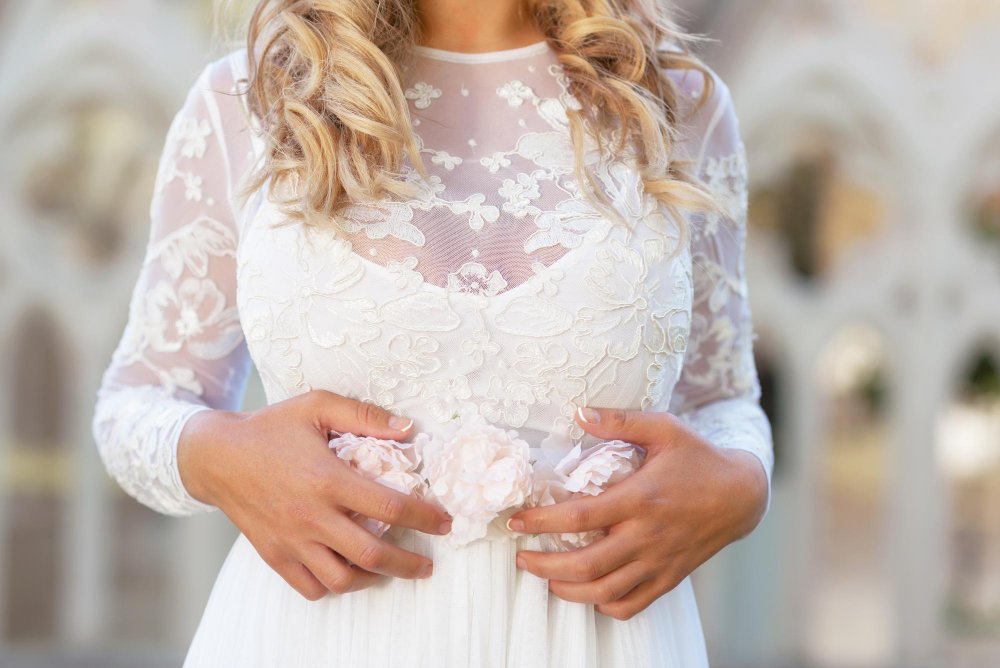
Bridal and Formal Wear Applications
The bridal industry showcases tulle’s most spectacular applications. Cathedral-length veils demonstrate how sheer layers create dramatic entrances without overwhelming petite frames. Multi-tier designs add movement and depth, while the fabric’s lightweight nature ensures comfort during long ceremonies and receptions.
For bridal gowns, layered tulle construction builds volume that floats rather than weighs down the wearer. This technique allows designers to create the fairy-tale silhouettes many brides dream of while ensuring the dress remains wearable throughout the wedding day. The fabric’s ability to hold intricate beadwork and embroidered details makes it perfect for elaborate bridal designs.
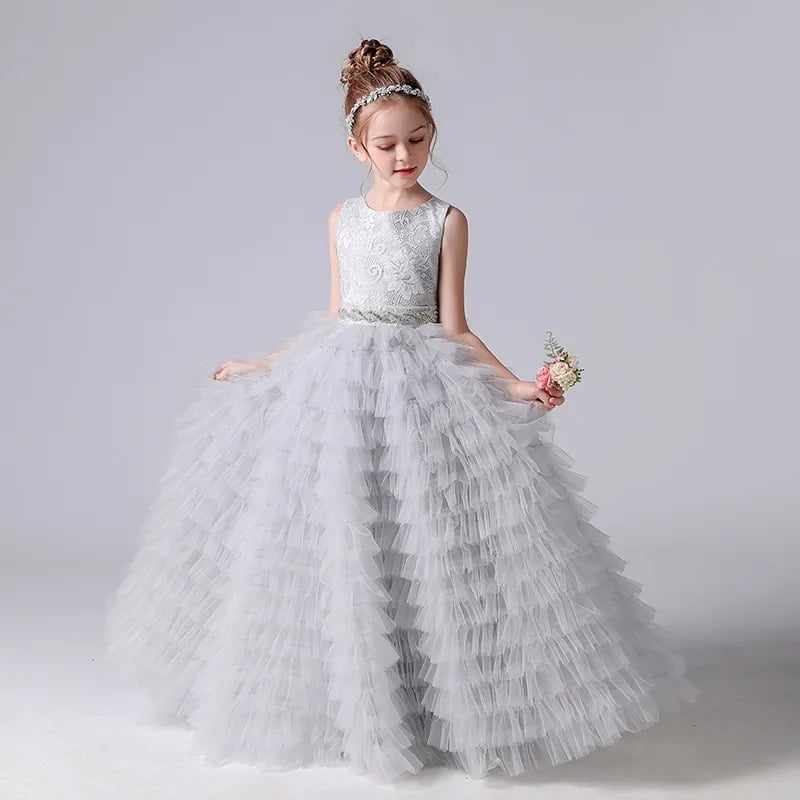
Elegant tulle flower girl dress showcasing the fabric’s perfect balance of formality and comfort for special occasions.
Modern Bridal Accessories and Innovations
Contemporary bridal fashion has expanded tulle’s role beyond traditional veils and skirts. Modern applications include:
- Detachable cape overlays that transform ceremony looks for reception dancing
- Structured sleeve elements that add romantic details to modern silhouettes
- Layered waist sashes with beaded accents that define and enhance body lines
- Removable train extensions that create versatility in a single gown
These innovations reflect how modern brides want versatility in their wedding attire, and tulle’s adaptability makes these transformations possible. For those planning special occasions, flower girl dresses often incorporate similar tulle techniques on a smaller scale.
Versatile Design Applications
Beyond bridal wear, tulle has found its way into everyday fashion and costume design. The fabric’s ability to add volume without weight makes it perfect for creating dramatic fashion statements while maintaining wearability.
Professional insights into different wedding dress fabrics, including tulle’s unique properties and applications.
DIY Techniques and Creative Projects
For creative enthusiasts looking to work with tulle in unique ways, there are countless possibilities for customization and personal expression. From creating your own lace patterns to adding decorative elements, tulle provides an excellent foundation for creative projects.
Creative DIY tutorial showing how to transform old tulle into beautiful custom lace fabric with decorative flowers.
Contemporary Fashion Integration
Modern designers use tulle in unexpected ways, moving beyond its traditional formal applications. Contemporary streetwear integrates delicate tulle details through cropped jackets, tiered skirts, and layered tops. The contrast between tulle’s ethereal quality and more structured fabrics creates interesting textural combinations that define current fashion trends.
Dance and performance wear particularly benefits from tulle’s movement qualities. The fabric flows beautifully with choreographed motion while maintaining its shape through repeated performances. Professional dance companies often specify tulle for costumes because it photographs well under stage lighting and doesn’t restrict movement.
Color and Pattern Innovation
Today’s tulle market offers an unprecedented range of colors and finishes. Designers can choose from over 150 color variations, with gold leading at 157 options and silver following with 109 choices. This extensive palette allows for precise color matching with other design elements.
Popular Tulle Color Categories
Specialty finishes like iridescent treatments create chameleon-like effects under changing lights, while glitter-embedded varieties add sparkle without the mess of loose glitter. These innovations allow designers to create unique effects that weren’t possible with traditional tulle treatments.
Sustainability and Eco-Friendly Options
As environmental consciousness grows in the fashion industry, tulle manufacturers have responded with innovative sustainable alternatives. These options prove that you don’t have to sacrifice beauty for environmental responsibility.
Recycled and Eco-Friendly Tulle Options
The most exciting development in sustainable tulle is the creation of fabrics from recycled ocean waste. Manufacturers now produce high-quality tulle using polyamide fibers recovered from abandoned fishing nets and other ocean plastic waste. This process not only creates beautiful fabric but also helps clean our oceans.
Recycled Ocean Plastic
Made from fishing nets and ocean waste. Certified by Global Recycle Standard (GRS).
Organic Cotton Blends
Softer, more breathable alternatives using certified organic fibers.
Plant-Based Dyes
Natural coloring from plants, eliminating harsh chemical processes.
Biodegradable Options
New polyamide that biodegrades within three years under proper conditions.
These sustainable options often cost only 10-20% more than conventional tulle while offering comparable quality and performance. The investment supports cleaner production methods and helps reduce the fashion industry’s environmental impact.
Environmental Impact and Future Trends
Traditional tulle production, particularly synthetic varieties, contributes to microplastic pollution when washed. However, new manufacturing techniques are addressing these concerns. Some companies now offer tulle treated with special coatings that reduce microfiber shedding during washing.
The future of sustainable tulle looks promising, with innovations like Amni Soul Eco, the first biodegradable polyamide. According to manufacturers, this material biodegrades within three years when disposed of properly, compared to conventional synthetic tulle that can persist in landfills for decades.
Care and Maintenance Guide
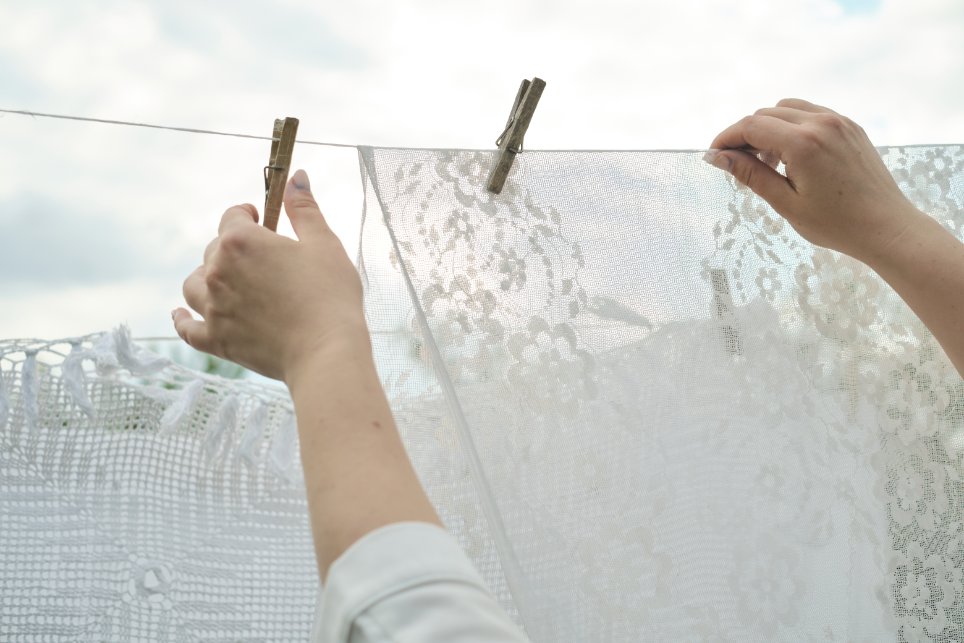
Proper care extends tulle’s lifespan significantly and maintains its delicate beauty. The fabric’s open structure requires specific techniques that differ from caring for solid fabrics.
Washing and Drying Techniques
Tulle Care Process
Can I Hand Wash Tulle?
Yes, hand washing is actually the preferred method for cleaning tulle. Fill a basin with cold water and add a small amount of mild detergent. Gently swirl the tulle in the water for 5-10 minutes, being careful not to stretch or twist the fabric. The key is to let the water do the work rather than applying mechanical force.
For machine washing, place tulle items in a mesh laundry bag and use the delicate cycle with cold water. This protects the fabric from getting caught on other garments or the machine’s agitator. Remember to separate tulle from items with zippers, hooks, or rough textures that could cause snags.
Can Tulle Be Ironed?
Yes, but with careful attention to temperature settings. Use the lowest heat setting on your iron and always place a thin pressing cloth between the iron and the tulle. The synthetic fibers in most tulle can melt at high temperatures, so patience and low heat are essential.
A garment steamer often works better than a traditional iron for tulle. Hold the steamer at least 6 inches away from the fabric and use gentle, sweeping motions. This method reduces the risk of heat damage while effectively removing wrinkles. For comprehensive care instructions covering all tulle types and situations, check out our detailed tulle care guide.
Professional tutorial on creating beautiful lace hems with tulle edges for elegant finishing touches.
Stain Removal Techniques
Acting quickly is crucial when dealing with stains on tulle. The fabric’s delicate nature means you need gentle but effective approaches that won’t damage the mesh structure.
Common Stain Solutions
Oil and Grease Stains
Wine and Beverage Stains
Chocolate and Food Stains
Sweat and Body Oils
Proper Storage Methods
Storing tulle correctly prevents wrinkles, yellowing, and shape distortion. For long-term storage, such as preserving a wedding dress, use acid-free tissue paper and breathable garment bags rather than plastic covers.
Fold tulle garments carefully along natural lines, stuffing bodices and sleeves with acid-free tissue to maintain shape. Store in a cool, dry place away from direct sunlight, which can cause fading and fiber degradation over time. Check stored items annually and refold along different lines to prevent permanent creases.
Troubleshooting Common Problems
Working with tulle can present unique challenges, but knowing how to address common issues will save you time and frustration. For step-by-step solutions to specific problems, try our interactive tulle troubleshooting flowchart that guides you through diagnosing and fixing issues. Here are solutions to the most frequent problems people encounter:
Sewing and Handling Issues
Static Cling
Puckering While Sewing
Snags and Tears
Layer Shifting
Is Tulle Itchy?
Quality tulle should not be itchy when worn properly. If you experience itchiness, it could be due to several factors:
- Fabric Quality: Lower-grade tulle often uses rougher fibers that can irritate skin
- Chemical Treatments: Some tulle is treated with sizing chemicals that can cause sensitivity
- Direct Contact: Tulle works best as an overlay rather than directly against skin
- Static Buildup: Static electricity can make any fabric feel uncomfortable
To minimize irritation, choose higher-quality tulle from reputable suppliers and ensure proper garment construction with appropriate linings. If you have sensitive skin, test a small fabric sample against your skin before committing to a large purchase.
Professional Solutions
For complex issues or valuable garments, consider professional help. Specialist bridal fabric cleaners have experience with tulle’s unique requirements and access to professional-grade treatments. For sewing problems, many fabric stores offer sewing machine troubleshooting services that can help optimize your machine settings for delicate fabrics. If you need immediate guidance for common tulle problems, our interactive troubleshooting tool provides instant step-by-step solutions.
Sourcing and Pricing Guide
Finding Quality Tulle at Different Price Points
Smart fabric shopping combines quality assessment with budget considerations. You can find excellent tulle across various price ranges by understanding what drives cost differences and where to look for the best deals. Before shopping, use our fabric weight calculator to determine exactly how much tulle you need for your project.
What is the Most Expensive Bridal Fabric?
Among bridal fabrics, hand-made French Alençon lace typically holds the title of most expensive, with prices reaching $300-500 per yard for authentic pieces. However, silk tulle ranks among the premium options for base fabrics, especially when combined with hand-embroidered details or imported from traditional European manufacturers.
Tulle Price Ranges by Quality Level
Quality indicators to look for include consistent thread thickness throughout the weave, precisely aligned pattern repeats, uniform mesh hole sizing, and secure embroidery stitching. Higher-quality tulle from France or Italy typically offers better hand-feel and draping characteristics, justifying the premium pricing.
Smart Shopping Strategies
Wholesale suppliers provide bulk discounts for projects requiring 10+ yards. Consider splitting large orders with other creators to meet minimums while saving on storage space. Many suppliers offer volume pricing that can reduce costs by 30-40% for larger quantities.
Local fabric stores sometimes offer remnant bins with discounted cuts perfect for small accents or testing purposes. Building relationships with shop owners can lead to notifications about upcoming sales and access to designer surplus materials at reduced prices.
Evaluating Fabric Quality
When comparing tulle options, examine the fabric’s country of origin. French and Italian tulle generally offer superior quality due to traditional manufacturing expertise and higher fiber standards. Asian-produced tulle can offer excellent value but varies more in quality between manufacturers.
Request samples when possible, especially for significant purchases. The tactile experience of feeling the fabric’s weight, softness, and drape provides information that photos cannot convey. Most reputable suppliers offer free samples for orders over a certain amount.
Frequently Asked Questions
Design Innovations and Future Trends
Cutting-Edge Manufacturing Techniques
Modern tulle production has embraced technology to create effects impossible with traditional methods. Three-dimensional textures now transform flat surfaces into tactile masterpieces, with manufacturers offering sculptural options that add depth and visual interest to garments.
Laser-cutting technology achieves razor-sharp edges on floral motifs, while heat transfers apply metallic accents without adding weight to the fabric. Digital printing expands possibilities with photorealistic images that flow seamlessly across gathered material, opening new creative avenues for designers.
Smart Fabric Technologies
Emerging technologies include thermo-sensitive coatings that change color with temperature and moisture-wicking treatments that enhance tulle’s natural breathability. These innovations maintain the fabric’s traditional appeal while adding functional benefits for modern applications.
3D Textured Tulle
Raised patterns create visual depth and tactile interest in formal wear applications.
Digital Print Technology
Photorealistic designs and custom patterns previously impossible with traditional methods.
Smart Treatments
Anti-static, moisture-wicking, and color-changing properties for enhanced functionality.
Precision Cutting
Laser technology creates intricate edge details without fraying or finishing requirements.
Professional and Industry Applications
Costume and Performance Design
The entertainment industry relies heavily on tulle for costume design, particularly in ballet, theater, and film. Professional costume departments choose tulle for its ability to create dramatic silhouettes that photograph well under stage lighting while allowing performers full range of motion.
For dance applications, tulle must meet specific requirements for durability and washability, as costumes undergo frequent cleaning and intense use. Professional-grade tulle often includes special treatments to reduce static and improve color fastness under hot stage lights.
Interior Design and Event Decoration
Beyond fashion, tulle has found significant applications in interior design and event decoration. Wedding planners use yards of tulle to create romantic atmospheres, draping ceilings, wrapping columns, and softening harsh architectural elements.
The fabric’s light-filtering properties make it excellent for window treatments where privacy is needed without completely blocking natural light. Event designers appreciate tulle’s ability to transform spaces quickly and cost-effectively.
Advanced Sewing and Construction Techniques
Professional Construction Methods
Professional seamstresses use specific techniques when working with tulle that differ significantly from standard fabric handling. French seams prevent fraying while maintaining clean lines, and rolled hems create nearly invisible edges on flowing veils.
For structured designs, horsehair braid adds subtle support along hems without adding bulk. These methods ensure creations withstand dancing, outdoor elements, and repeated wear while maintaining their elegant appearance.
Essential Tools for Success
| Tool | Purpose | Professional Alternative | Budget Option |
|---|---|---|---|
| Microtex Needles | Prevent snags and runs | Size 9 sharps | Universal 70/10 |
| Silk Thread | Blends seamlessly with fabric | Polyester 50wt | Cotton-wrapped poly |
| Tulle Stabilizer | Controls stretching during sewing | Water-soluble stabilizer | Tissue paper |
| Rotary Cutter | Clean, precise cuts | Professional fabric shears | Sharp craft scissors |
Attachment systems like concealed snaps keep veils secure yet removable, while invisible zippers maintain clean lines in formal wear. Understanding these professional techniques helps ensure your projects achieve a polished, commercial-quality finish.
Global Production and Cultural Significance
International Manufacturing Centers
While tulle originated in France, production has become global, with each region contributing unique characteristics to the market. French tulle still sets the standard for luxury applications, particularly for bridal wear where tradition and quality command premium prices.
Italian manufacturers excel in combining traditional techniques with modern innovation, producing tulle that balances heritage craftsmanship with contemporary performance requirements. Asian production centers, particularly in China and Vietnam, have democratized access to tulle by offering quality options at various price points.
Cultural Applications Around the World
Different cultures have adopted tulle for various traditional and ceremonial purposes. Understanding these applications provides insight into the fabric’s versatility and global appeal:
- European Traditions: Used in communion dresses, traditional folk costumes, and formal court wear
- Asian Applications: Incorporated into contemporary versions of traditional garments for special ceremonies
- American Innovation: Pioneered the use of tulle in casual wear and contemporary fashion applications
- Latin American Celebrations: Featured prominently in quinceañera gowns and festival costumes
These diverse applications demonstrate tulle’s universal appeal and adaptability across different aesthetic traditions and functional requirements. When planning your own tulle project, our tulle fabric calculator can help you determine exactly how much material you’ll need for any application.
Conclusion
Tulle lace fabric represents the perfect marriage of beauty and functionality in the textile world. Its unique combination of delicate appearance and structural integrity has made it an enduring favorite among designers, from haute couture houses to home sewing enthusiasts. The fabric’s evolution from exclusive French luxury to accessible creative medium reflects broader changes in fashion democratization and manufacturing innovation.
Key Recommendations for Success
For Beginners: Start with mid-range polyester or nylon tulle to practice techniques before investing in expensive silk varieties. These materials offer forgiveness during the learning process while still producing beautiful results. Focus on mastering basic care and handling techniques before attempting complex embellished projects.
For Professional Applications: Invest in quality tools and materials appropriate to your project’s end use. Bridal work justifies premium silk tulle and professional-grade construction methods, while costume applications may benefit from more durable synthetic options. Always request samples and test construction techniques on scraps before beginning final projects.
For Sustainable Fashion: Explore eco-friendly alternatives like recycled polyester tulle or organic cotton blends. These options often provide excellent quality while supporting environmental goals. The slight price premium supports cleaner production methods and helps drive industry innovation toward more sustainable practices.
Future Outlook and Innovation
The tulle industry continues evolving with advancing technology and changing consumer values. Sustainable manufacturing processes are becoming standard rather than exception, while smart fabric technologies add functionality without compromising the ethereal qualities that make tulle special.
Digital design tools are enabling more precise pattern creation and color matching, while improved recycling technologies are making sustainable options more competitive with traditional materials. These developments suggest that tulle will continue adapting to meet modern needs while preserving its timeless appeal.
Final Takeaways
Essential Points to Remember
- Quality Matters: Invest in the best tulle your budget allows for the intended application. Higher quality pays dividends in appearance, comfort, and longevity.
- Care is Critical: Proper washing, storage, and handling techniques dramatically extend tulle’s lifespan and maintain its beauty.
- Sustainability Options Exist: Eco-friendly alternatives offer comparable quality while supporting environmental responsibility.
- Versatility is Key: From formal wear to casual accents, tulle adapts to countless creative applications with proper technique.
- Professional Help Available: Don’t hesitate to consult specialists for complex projects or valuable garments requiring expert care.
Whether you’re creating a once-in-a-lifetime wedding dress, adding romantic details to everyday wear, or exploring sustainable fashion options, tulle lace fabric offers unmatched possibilities for creative expression. With proper knowledge, care, and technique, this remarkable material will continue bringing dreams to life through beautiful, wearable art.
As you embark on your tulle projects, remember that mastery comes through practice and experimentation. Each project teaches valuable lessons about working with this unique material, building skills that enhance both technical proficiency and creative confidence. The investment in learning proper tulle techniques pays dividends across countless future projects, making every effort worthwhile.
External References and Further Reading
For additional information about fabric care and construction techniques, consider these authoritative resources:
- Bridal Fabrics – Professional Tulle Collection
- The Creative Curator – Types of Tulle Guide
- Material District – Sustainable Tulle Innovations
These resources provide additional depth and professional perspectives that complement the practical guidance offered in this comprehensive guide.

